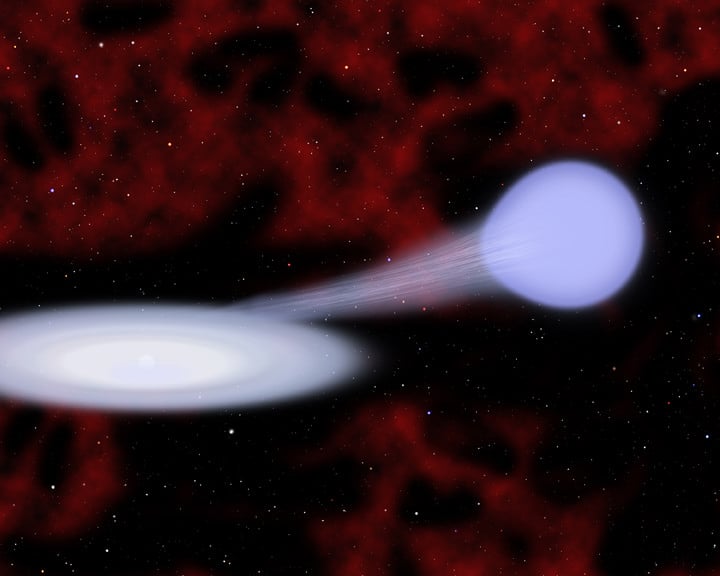[/caption]
Earlier this month astronomers released news of the darkest exoplanet ever seen: discovered in 2006, the gas giant TrES-2b reflects less than 1% of the visible light from its parent star… it's literally darker than coal! Universe Today posted an
article
about this intriguing announcement on August 11, and now Dr. David Kipping of the Harvard-Smithsonian Center for Astrophysics is featuring a podcast on
365 Days of Astronomy
in which he gives more detail about the dark nature of this discovery.
[caption id="attachment_88372" align="alignright" width="175" caption="The 365 Days of Astronomy Podcast is a project that will publish one podcast per day, for all 365 days of 2011. The podcast episodes are written, recorded and produced by people around the world."]
[/caption]
"TrES-2b is similar in mass and radius to Jupiter but Jupiter reflects some 50% of the incident light. TrES-2b has a reflectivity less than that of any other planet or moon in the Solar System or beyond. The reflectivity is significantly less than even black acrylic paint, which makes the mind boggle as to what a clump of this planet would look like in your hand. Perhaps an appropriate nickname for the world would be Erebus, the Greek God of Darkness and Shadow. But what really is causing this planet to be so dark?"
– Dr. David Kipping
David Kipping obtained a PhD in Astrophysics from University College London earlier this year. His thesis was entitled 'The Transits of Extrasolar Planets with Moons' and David's main research interest revolves around exomoons. He is just starting a Carl Sagan Fellowship at the Harvard-Smithsonian Center for Astrophysics.
The paper on which the the podcast is based can be found
here
.
Jason Major is a graphic designer, photo enthusiast and space blogger. Visit his website
*Lights in the Dark*
and follow him on Twitter
@JPMajor
and on
for more astronomy news and images!
 Universe Today
Universe Today
